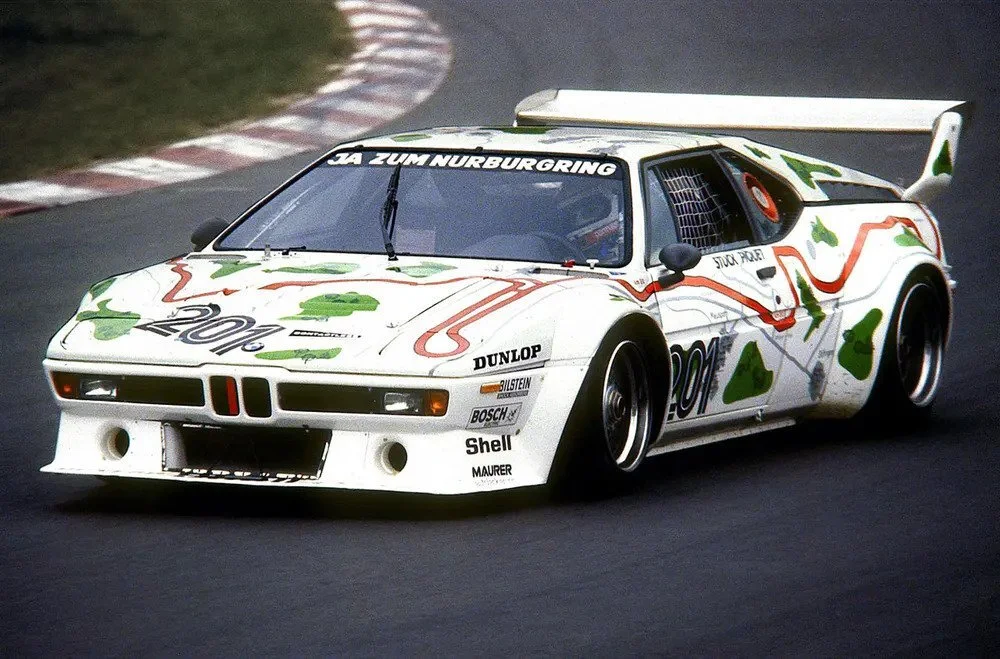Words by Dionysis Nanos
It’s back to the 70s this time. The decade of discos, Watergate, sexual liberation and V8 Corvettes with less hp than a VW Polo GTI. But, most importantly here, it was also the decade that gave the world the Group 5 racing class. "But hold on. What is the Group 5 Racing Class ?" I hear you asking. Well, think of Group 5 as the predecessor to the FIA's GT1 spec cars of the mid to late 90s; cars like the Porsche 911 GT1 and the Mercedes CLK GTR that only shared the name and some basic trim pieces with the production cars they were "based" on. Group 5 gave us some memorable cars like the Zakspeed Ford Capri Turbo, the Ferrari 512BB LM and most notably the Porsche 935 (otherwise known as Moby Dick) and the historical 917. It’s apparent then that Porsche were at the top of their game in Group 5 and that made Bavarian neighbors and bitter rivals BMW very angry. So angry in fact that they initiated a new project in order to beat Porsche at its own game. The project’s name? M1.
The plan was relatively simple. Make a race car that could beat the Group 5 Porsches. But before that could happen, BMW needed to make 400 road going examples, for the car to be homologated for racing. That wouldn’t have been a real challenge if it wasn’t for then BMW’s head of the motorsport division, Jochen Neerpasch, who wanted the car to have a mid mounted engine, in order to have near perfect weight distribution. But BMW simply didn’t have enough time to learn how to make and actually build their own mid-engine car, and so the decision was made to partner up with supercar specialist Lamborghini. The deal sounded like a dream. BMW would get the Porsche-beating supercar it wanted and cash strapped Lamborghini would get enough money to stay afloat until the end of the week. And this plan worked… for about 8 minutes, with 7 M1s made in Sant’Agata in Bologna before Lamborghini went belly side up.
The M1s predecessor, the Turbo concept car. Note the many similarities between the two.
By the time Lamborghini bit the dust, it was 1978 already and BMW was running late, and to make matters even worse, the Italian court that got the job of clearing up Lamborghini’s assets almost sold the 7 M1s for scrap. That meant that BMW had to come up with a new strategy to make their car, meaning more money and more time being poured into a project that was quickly becoming unprofitable. The changed production plan went as followed. The fiber glass bodies and the chassis would be built by Modena-based companies Italina Resina and Marchesi respectively, while the interiors and the rest of the exterior would be completed in Italdesign’s factory in Turin, before everything went to Baur in Germany where the engines and the transmissions were waiting for final assembly. So while the car was indeed 90% Italian it was that 10% that made it German. Very German.
And you can’t go more German than the beast’s heart. It was a hand built 3.5 litre straight six that made 274 hp, 330 Nm of torque and had a more than respectable for the time top speed of 260 km/h (or 162 mph). All this was mated to a 5 speed ZF transmission, while adjustable coil springs and gas filled Bilstein dampers guaranteed that the car turned as well as it accelerated. Ventilated brakes and Campagnolo alloys with Pirelli P7 tires completed what definitely was one of the best handling cars of its day. But sadly it was already too late.
A “naked” M1. Note the engine and the advanced (for the time) suspension and chassis.
By the time BMW got the hang of building the M1 in 1979, Group 5 regulations had changed which meant that the car was now obsolete. Still, it had quite a successful racing career both in Group 4 GT racing and Le Mans where it raced from 1981 to 1986 proving very competitive. Most importantly though, the M1 had its own race series, the "Procar BMW M1 Championship", which was devised as a way for BMW to build enough cars to be eligible for Group 4. The championship featured F1 titans like Niki Lauda, who won the inaugural championship in 1979, and Nelson Piquet who won in 1980. But the dream of destroying Porsche remained just that. A dream.
Nelson Piquet’s M1 in 1980.
Still though, saying that the M1 was a complete failure would be a lie. Not only did it prove to be a capable race car when it finally raced, but it also established BMW’s M division as a force to be reckoned with when it came to making great sports cars. Some of the best road cars out there like the E30 and E46 M3 and the E28 and E39 M5 exist because of the M1, and so the M1 lives on in the hearts of fans everywhere as a testament to everything great about BMW. It’s the genesis. It’s special.




